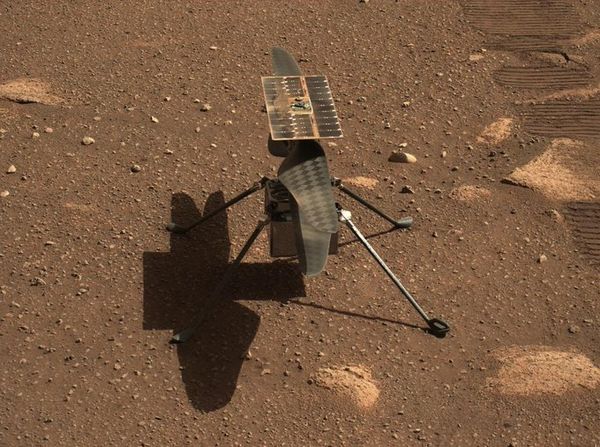NASA had
initially planned just five flights for its helicopter on Mars, Ingenuity.
However, after completing 12 flights and with no signs of slowing down soon,
the US space agency has indefinitely extended the helicopter’s mission.
The success
of the helicopter, which is accompanying the rover Perseverance in its search
for signs of ancient life on the Red Planet, has even surprised the team of engineers
behind the project.
“Everything
is working so well. We’re doing better on the surface than we had expected,” Josh
Ravich, the head of Ingenuity’s mechanical engineering team, told news agency AFP.
Also Read | NASA’s Perseverance rover documents Ingenuity copter’s audio
Ravich joined
the team five years ago, and is among the dozen-odd people who still have day-to-day
roles from the hundreds who contributed to the project. When he first got the
opportunity to work with NASA on the helicopter, he had the same reaction as
probably anyone would have.
“Is that
even possible?” Ravich said.
The doubts
come from the numerous challenges facing the prospect of flying a helicopter on
another planet. The atmosphere on Mars is merely 1% compared to that of Earth,
meaning flying a helicopter there would be equivalent to flying one around 10
miles (30 kilometres) above Earth.
Also Read | NASA’s Mars helicopter hits record speed of 6.6 feet per second in 3rd flight
Getting the
helicopter intact to Mars was another problem, as it had to bear the initial
shock of takeoff from Earth and then the landing on Mars on February 18 after
completing a seven-month voyage through space, all while strapped to the rover’s
underside.
The four-pound
(1.8 kilogram) helicopter then had to withstand the icy cold nights on Mars, as
it drew energy from its solar cells – that are charged during the day – to keep
warm for systems to function optimally.
Also, coordinating
its flight real-time is impossible, given the 15-minute communication delay
between Mars and Earth, thus its flight is aided by an array of sensors.
Also Read | Rocket ‘terminated’ over Pacific Ocean in an explosive fireball
“We’ve
actually been able to handle winds greater than we had expected,” Ravich said. “I
think by flight three we had actually accomplished all of our engineering goals
… (and) got all the information we had hoped to get.”
In all, Ingenuity
has flown a distance of 1.6 miles. NASA is now working on data from the
helicopter to design its successor, which could weigh around 20-30 kilograms.
A craft of
that size could carry science payloads, which can include rock samples – something
NASA intends to retrieve on a future mission in the 2030s.







